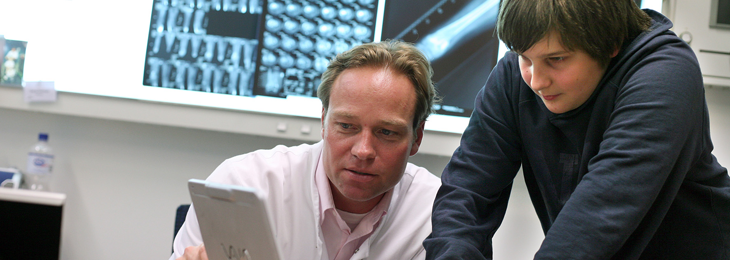
High-grade osteosarcoma
Conventional high-grade osteosarcoma is the most common primary malignant bone tumor, and mostly affects children, adolescents and young adults. The majority of tumors are localized in the lower part of the femur, the upper part of the tibia, the upper part of the humerus and the pelvis.
The local treatment of choice is surgical excision of the entire tumor surrounded by a layer of healthy tissue, which is considered to be a prerequisite for long-term survival. In specialized centers this can be achieved in the vast majority of patients by limb-salvage surgery – meaning that the tumor can be adequately excised without compromising the function of the affected extremity.
Following the excision of most osteosarcomas, it is necessary to reconstruct the resulting defect. The most common form of reconstruction is endoprosthetic replacement, which involves implanting specialized metallic megaprostheses. The choice of the optimal implant and the of the optimal reconstruction method depends on several factors, such as tumor site and extension, as well as patient age, activity level and expected prognosis. For that reason the treating surgeon should be proficient in several different reconstruction options.
About 20% of osteosarcoma patients have clinically detectable metastases at the time of diagnosis, approximately 90% of which are localized in the lungs and 10% in other bones. Even patients without detectable metastases are thought, however, to have micrometastases at diagnosis, since in the past about 90% of all patients developed metastasis a few months after sole surgical treatment and died of their disease. For that reason, high-grade osteosarcoma patients require a pre- and postoperative chemotherapy, which, in combination with an adequate surgical treatment, leads to 5-year survival rates of >60%. An extensive experience in the interdisciplinary treatment of osteosarcoma is required to administer the best possible treatment to each patient.









